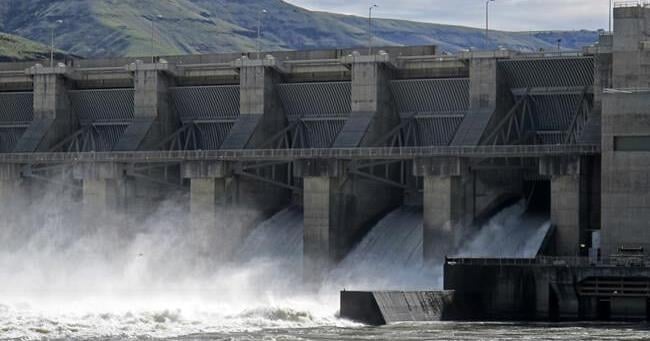SEATTLE (AP) — The U.S. government on Tuesday acknowledged for the first time the harms caused to Native American tribes by the construction and operation of dams on the Columbia and Snake rivers in the Pacific Northwest.
The commission released a report detailing how the unprecedented structures continue to devastate salmon runs, submerge villages and burial grounds, and severely limit tribes' ability to exercise their treaty fishing rights.
The Biden administration's report was released as part of a $1 billion effort announced earlier this year to prevent a mass salmon die-off and work more closely with tribes on actions needed to do so, including increasing renewable energy production and storage to replace hydroelectric power that would be lost if four dams on the lower Snake River fail.
“President Biden recognizes that confronting injustice requires being honest about history, even when it is difficult,” Interior Secretary Deb Haaland and Brenda Mallory, chair of the White House Council on Environmental Quality, said in a written statement. “In the Pacific Northwest, an open and frank conversation about the history and legacy of federal stewardship of the Columbia River is long overdue.”
The document, which was a requirement of last year's agreement to end a decades-long legal battle over the dam's operation, details how government and private interests in the early 20th century dammed the Northwest's largest tributary of the Columbia River to provide water for irrigation and flood control, exacerbating damage already done to water quality and salmon runs by mining, logging and salmon canning.
Tribal representatives said they were pleased with the administration's belated, formal acknowledgment that the U.S. government has ignored tribal concerns about how the dam would affect them for generations, and they welcome steps to address those harms.
“The current administration has taken aggressive action to rebalance the transfer of wealth,” said Tom Iverson, regional coordinator for the Yakama Nation Fisheries. “Salmon were the wealth of the river. What we've seen is wealth shifting to farmers, loggers and hydroelectric systems to the detriment of tribes.”
The first dams built on the Columbia River in the 1930s, like Grand Coulee and Bonneville, brought hydroelectric power, navigation and jobs to a nation struggling with the Great Depression, but they were built over opposition from tribes who feared the loss of salmon, traditional hunting and fishing grounds, and even villages and burial grounds.
As early as the late 1930s, tribes warned that the dam would prevent salmon from accessing their spawning grounds upstream and thus could eliminate their salmon runs. Tribes, including the Yakama, Spokane, Confederated Tribes of the Colville and Umatilla Reservations, and the Nez Perce, had opposed the dam's construction and operation for generations.
“As the complete system of dams and reservoirs was developed, tribes and other stakeholders protested and raised alarms about the harmful effects of the dams on salmon and aquatic life, and the government acknowledged this at times,” the report states. “Yet the government gave little or no consideration to the destruction the dams would cause to tribal communities, including tribal cultures, sacred sites, economies, and homes.”
The report also announced the creation of a new task force to coordinate salmon recovery efforts across federal agencies.
The Canadian Press. All rights reserved.



